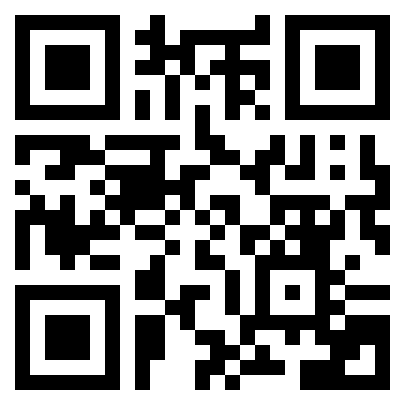- Unit 17 Caring for Individuals with Dementia BTEC Level 3 Assignment Brief Case Study
- BTEC Level 3 Unit 15 Care for Individuals with Dementia Assessment
- Unit 3: Professional Practice Authorised Assignment Brief 2025–2026, ESOFT Metro Campus
- Unit 7 Leadership & Management People Assignment – Level 3 Diploma in Business and Management
- HNC Civil Engineering Assignment 2 The Construction Environment
- HNC Civil Engineering Assignment 1 Geotechnics & Soil Mechanics Academic Year 24/25
- UNIT CMI 519 Managing Quality and Continuous Improvement Assessment Brief
- Level 5 in Leadership and Management in Adult Care – Governance and Regulatory Process in Adult Care and Decision Making in Adult Care
- BTM6GSM Global Strategic Management Level 6 Assignment 1 Case Study
- Level 5 in Leadership and Management in Adult Care – Supervising Others and Facilitate Coaching and Mentoring of Practitioners in Care Settings
- Unit 2 Marketing Processes and Planning Assignment Brief 2025-2026
- Unit 805 Strategic Communication Assignment Brief- Media Impact on International Organisations
- UNIT CMI 513 Managing Projects to Achieve Results Assessment Brief
- AFM5CGL Level 5 Corporate Governance and leadership Assignment Case Study
- Law, Policy and Ethical Practice in Health and Social Care Assignment 2025-2026
- BTEC International Level 3 in Business Pearson Set Assignment – Unit 7 Business Decision Making
- Unit 7 Budget Assignment: Effective Financial Planning, Budgetary Control, and Stakeholder Management in Dental Practice
- Level 2 NVQ Diploma in Specialist Concrete Occupations Assignment: Knowledge and Understanding of Health, Safety, Work Practices, and Concrete Application
- Level 4 SPS4064 Physiology of Exercise Assignment: Comprehensive Assessment Through MCQs and an In-Depth Marathon Running Case Study
- Communication Management Assignment: Monitoring, Evaluating, and Improving Workplace Communication Systems
MBA7066 Innovation and Entreprenuership Assignment Brief 2024-2025 | University of Greater Manchester
| University | University of Greater Manchester |
| Subject | MBA7066 Innovation and Entreprenuership |
ASSESSMENT BRIEF
| Assessment Number | AS1 |
| Assessment Type (and weighting) | Portfolio – 5000 words (100%) |
| Assessment Name | New Venture Business Plan |
| Assessment Submission Date | 14th December 2025- Via Turnitin @23:59hrs |
Struggling With Your MBA7066 Innovation & Entrepreneurship Business Plan?
Learning Outcomes Assessed:
LO1. Demonstrate a systematic and critical understanding of contemporary tools, techniques, and strategies for innovation management, entrepreneurial thinking, opportunity evaluation, and the development of new ventures.
LO2 . Critically evaluate market opportunities, technology developments, and available resources, including sources of capital, and synthesise findings to support innovative value propositions and new ventures.
LO3. Identify and critically evaluate and interrelate stakeholder interests and key risks, including financial, commercial, technical, and legal risks, in the context of a new venture, and propose and justify strategies for managing these complex issues.
LO4. Develop a cogent and justified a business plan for a new venture to respond to an evidenced-based market opportunity support by a critical analysis of key risks and key stakeholder interests.
Use of Generative Artificial Intelligence (GAI) Applications in this Assessment
| AI Status | Application | Notes |
| Category B | GAI can be used to assist you with the assessment.
|
1. Generating new ideas, using Chat GPT or GAI is allowed.
2. Analytical templates for stakeholders, risks or for any other model is also allowed. 3. Grammar and/or spell checkers may be used to correct individual words and sentences When writing the assignment avoid AI. The content should be contextualised to your chosen new venture in your own words support by relevant research referencing ( and in-text citation). Any GAI generated content which is presented as your own original work and is not acknowledged will be assessed for academic misconduct. |
Assignment Brief
Each student is required to evaluate a business opportunity and develop a critical, robust and comprehensive plan that seeks to develop and exploit the opportunity identified.
Important: Students must propose a completely original and creative business idea; existing businesses cannot be used
Part 1 – Pitch (Presentation 10 minutes ) – Formative assessment should be completed before week 4
Present a new business idea in class and get it approved from your tutor.
Your presentation slides should justify the new business proposal.
After approval upload it in formative link on Canvas.
Part 2 – Business Development Plan – Report (5000 words) Summative Assessment
The report should based on new business venture proposed in part 1
- As an entrepreneur, provide a robust justification for a new business development within a specified industry.
- Critically appraise the market opportunity identified, and discuss the process through which opportunity will be developed and evaluated.
- Develop evidence of a systematic assessment in the external environment and how it aligns with the internal capabilities of the firm.
- Discussion should be structured around a relevant and comprehensive business development strategy, as covered in class.
- Provide a critical reflection of your journey as an entrepreneur when going through business development plan.
Guidelines for Format and Structure:
- Executive Summary (250 words)
- Introduction to the new venture and entrepreneur thinking ( 500 words)
- Market Opportunity and risk analysis (1000 words)
- Internal capabilities and external environmental analysis (1000 words)
- Business Plan for the New Venture using strategic model (1500 words)
- Reflection on your journey as Entrepreneur (750 words)
Specific Assessment Criteria
Distinction (70% and above)
A cohesive, comprehensive and critical synthesis of the business development literature and concepts will be provided. Relationships between these and the nature and peculiarities of the opportunity being developed will be expertly elicited. An excellent evaluation of your justification for and approach to business development will be clearly articulated. The discussion on opportunity identification, development and evaluation will be succinct, relevant and insightful. Assessment of the internal and external environment will be will be expertly summarised and comprehensively justified.
Extensive research demonstrating use of a wide range of current secondary research sources will be evident. Referencing and English will be excellent.
Merit (60-69%)
A clear and critical synthesis of the business development literature and concepts will be provided. Relationships between these and the nature and peculiarities of the opportunity being developed will be well elicited. A good justification for and approach to business development will be set out. The discussion on opportunity identification, development and evaluation will be clear and well evidenced. Assessment of the internal and external environment will be will be summarised and well justified.
Wider research demonstrating use of a good range of current secondary research sources will be evident. Referencing and English will be good.
Pass (50%-59%)
A critical synthesis of the business development literature and concepts will be provided. Relationships between these and the nature and peculiarities of the opportunity being developed will be clearly drawn out. A relevant justification for and approach to business development will be set out. The discussion on opportunity identification, development and evaluation will be relevant and evidenced. Assessment of the internal and external environment will be will be coherent and justified.
Research demonstrating use of a range of current secondary research sources will be evident. Referencing and English will be satisfactory.
Fail (Below 50%):
Students who do not meet the requirements of the Pass criteria will not successfully complete the assessment activity.
Minimum Secondary Research Sources Requirements
Level HE7 – It is expected that the Reference List will contain between fifteen to twenty sources. As a MINIMUM the Reference List should include four refereed academic journals and five academic books.
IMPORTANT INFORMATION: To be added in your assignment
Declaration: At the end of the assessment you should also include a declaration of any software tools including Generative AI (GAI) applications that you used in developing and completing the assessment. The assessment brief will specify if and how you can use GAI applications in the assessment.
Guidelines for the Preparation and Submission of Written Assessments
- Written assessments should be word-processed in Arial or Calibri Light font size 12. There should be double-spacing and each page should be numbered.
- There should be a title page identifying the programme name, module title, assessment title, your student number, your tutor and the date of submission.
- You should include a word-count (excluding reference list/bibliography, figures, tables and appendices).
Where a word limit is specified, the following penalty systems applies:
- Up to 10% over the specified word length = no penalty
- 10 – 20% over the specified indicative word length = 5 marks subtracted (but if the assessment would normally gain a pass mark, then the final mark to be no lower than the pass mark for the assessment).
- More than 20% over the indicative word length = if the assessment would normally gain a pass mark or more, then the final mark will be capped at the pass mark for the assessment.
- At the end of the assessment you should include a declaration of any software tools including Generative AI (GAI) applications that you used in developing and completing the assessment. The assessment brief will specify if and how you can use GAI applications in the assessment.
- All written work should be referenced using the standard University of Bolton referencing style– see: https://libguides.bolton.ac.uk/resources/referencing
- Please note that when you submit your work to Canvas, it will automatically be checked for matches against other electronic information, as well as for hidden text characters and GAI generated text. You will be able to see similarity matches but not currently flags for hidden characters and AI-generated text. The outcomes of Turnitin reports may be used as evidence in an academic misconduct investigation.
Late Work Penalties
Late work will be subject to the following penalties:
- Up to 7 calendar days late = 10 marks subtracted but if the assignment would normally gain a pass mark, then the final mark to be no lower than the pass mark for the assignment.
- More than 7 calendar days late = This will be counted as non-submission and no marks will be recorded.
Late submission of assessments on refer and those which are graded Pass/Fail only, is not permitted unless an extension is approved. See below.
Extensions
In the case of exceptional and unforeseen circumstances, an extension of up to 14 days after the assessment deadline may be requested using the standard University Extension Request Form. For approval there would need to be an explanation and evidence of relevant circumstances.
Longer extensions for individual assessments, projects and artefacts may be granted, at the discretion of the Programme Leader.
Need Help Developing Your New Venture Idea for the UoGM Portfolio Assessment?
Appendix A – Specific Assessment Criteria (Rubric)
| Exceptional
85-100% |
Excellent
70-84% |
Good
60-69% |
Satisfactory
50-59% |
Borderline Fail
45-49% |
Fail
Below 45% |
|
| ES and New business idea and Entrepreneurial thinking, ( 15%)
|
Holistic critical review of the new venture idea. Report sections outlined and interrelated. Critical synthesis of market opportunities, technology developments, and available resources, including sources of capital
Synthesised findings to support innovative value propositions in the new ventures Clear justification of models supported by brief critical review of alternatives. |
Succinct critical review of the new venture idea. Critical evaluation of market opportunities, technology developments, and available resources, including sources of capital.
Synthesised findings to support innovative value propositions in the new ventures drawn from high quality sources. Clear justification of models. supported by summary review of alternatives. |
Summary of review of the new venture idea. Good overview and justification of market opportunities, technology developments, and available resources, including sources of capital.
Good analysis to support innovative value propositions in the new ventures |
Coherent outline of the new venture idea. Outline of report sections. Coherent discussion on market opportunities, technology developments, and available resources, including sources of capital.
Explanations on innovative value propositions in the new ventures. Further critical analysis and justification of models chosen would strengthen. |
Limited or superficial treatment of new venture idea. Report sections not linked clearly. Discussion missing or incomplete on market opportunities, technology developments, and available resources, including sources of capital.
Few, if any alternatives considered. |
Weak justification of new venture idea and missed some of the sections of the report. Discussion of models is superficial and lacks critical engagement; some of the models may be irrelevant. Justification of market opportunities, technology developments, and available resources, including sources of capital is missing. No alternatives considered. |
| Market opportunity and Risk Analysis (20%) | Insightful, holistic critical analysis; of Stakeholders interests, strategies and different types of risk | Integrated critical analysis; of Stakeholders interests, strategies and different types of risk | Effective critical analysis; of Stakeholders interests, strategies, and different types of risk | Strong analysis, of Stakeholders interests, strategies and different types of risk | Application of models is incomplete, and analysis of Stakeholders interests, strategies and different types of risk is limited. | Key elements may be missing or incomplete. For example, analysis is lacking; the model(s) are used descriptively rather than for analysis, e.g., of Stakeholders interests, strategies, and different types of risk |
| Internal capabilities and external environmental analysis ( 20%) | Presents an exceptional critique of advanced research material resulting in clear, original and illuminating conclusions when analyzing internal capabilities and external environment
Expertly interprets complex matters and ideas and makes sound judgments in the absence of complete data |
Presents an excellent critique of advanced research material resulting in clear, original and illuminating conclusions when analyzing internal capabilities and external environment.
Comprehensively interprets complex matters and ideas and makes sound judgments in the absence of complete data.
|
Presents a comprehensive critique of advanced research material resulting in clear and original conclusions.
Systematically interprets complex matters and ideas and makes sound judgments in the absence of complete data when analyzing internal capabilities and external environment Demonstrates creative flair and originality.
|
Presents some critique of advanced research material resulting in original conclusions when analyzing internal capabilities and external environment.
Shows the ability to systematically interpret complex matters and ideas and makes sound judgments in the absence of complete data.
|
A limited critique of research material presented, with simplistic conclusions drawn when analyzing internal capabilities and external environment.
Some complex matters and ideas interpreted but not systematically, resulting in flawed judgements.
Limited creativity and originality evident |
An absence of critique of research material evident with unjustified conclusions when analyzing internal capabilities and external environment.
Complex matters and ideas not interpreted correctly resulting in flawed judgements.
Creativity and originality are absent |
| New business development strategy (25%) | Holistic, critical review of Strategy development and Valid proposed strategy for developing the new venture | Succinct, critical review of Strategy development and Valid proposed strategy for developing the new venture | Strategies applied were critically reviewed and their effectiveness related to the strategy development. | Strategies applied were satisfactorily reviewed and their effectiveness related to the strategy development. | Limited review of Strategies applied, and their effectiveness related to the strategy development. | Key elements of strategy development and weak justification of the proposed strategy |
| Personal reflection on journey (15%) | Provides insightful reflection and critical self-awareness in relation to the outcomes of own work and personal responsibility of entrepreneurial journey | Provides excellent reflection and critical self-awareness in relation to the outcomes of own work and personal responsibility of entrepreneurial journey | Provides good reflection and critical self-awareness in relation to the outcomes of own work and personal responsibility of entrepreneurial journey, as required by the assessment. | Provides justified reflection and critical self-awareness in relation to the outcomes of own work and personal responsibility of entrepreneurial journey, as required by the assessment.
|
Provides limited reflection and critical self-awareness in relation to the outcomes of own work and personal responsibility of entrepreneurial journey, when required | Provides inadequate reflection and critical self-awareness in relation to the outcomes of own work and personal responsibility of entrepreneurial journey, when required. |
| Format, Structure and Referencing (5%)
|
Coherently articulated and logically structured the business plan and an appropriate format is used. | For the most part coherently articulated and logically structured the business plan and mostly followed the appropriate format | Adequate attempt at articulation and logical structure of the business plan and an acceptable format used. | Limited attempt at articulation and problems with structure of the business plan. Some formatting errors. Some of the sources may be a little outdated. | Poorly structured. Lack of articulation of the business plan. Format deficient and sources may be a little outdated. | Unstructured the business plan. Lack of articulation.
Format deficient. Limited engagement with appropriate literature: sources are dated and/or of poor quality. |
Can’t Complete Your MBA7066 Innovation & Entrepreneurship Assignment on Time?
Struggling to complete your MBA7066 Innovation & Entrepreneurship Business Plan? Many University of Manchester students find this portfolio assignment challenging due to its detailed market analysis, financial modelling and venture development requirements. But there’s no need to stress — Diploma Assignment Help UK provides expert MBA assignment assistance tailored to your university standards. Before placing an order, you can even check our Innovation & Entrepreneurship assignment sample to see the quality we deliver. Get 100% plagiarism-free, professionally written work — customised exclusively for your business idea. Order today and score higher in your MBA7066 coursework with expert guidance!




